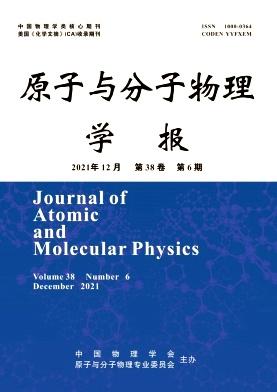Polymorphism, Hydrogen Bond Properties, and Vibrational Structure of 1H-Pyrrolo[3,2-h]Quinoline Dimers
引用次数: 3
Abstract
Two forms of cyclic, doubly hydrogen-bonded dimers are discovered for crystalline 1H-pyrrolo[3,2-h]quinoline, a bifunctional molecule possessing both hydrogen bond donor and acceptor groups. One of the forms is planar, the other is twisted. Analysis of IR and Raman spectra, combined with DFT calculations, allows one to assign the observed vibrations and to single out vibrational transitions which can serve as markers of hydrogen bond formation and dimer structure. Raman spectra measured for samples submitted to high pressure indicate a transition from the planar towards the twisted structure. Formation of intermolecular hydrogen bonds leads to a large increase of the Raman intensity of the NH stretching band: it can be readily observed for the dimer, but is absent in the monomer spectrum.1h -吡咯[3,2-h]喹啉二聚体的多态性、氢键性质和振动结构
在结晶1h -吡咯[3,2-h]喹啉中发现了两种形式的环状双氢键二聚体,这是一种双功能分子,同时具有氢键供体和受体基团。其中一种形式是平面的,另一种是扭曲的。红外光谱和拉曼光谱的分析,结合DFT计算,允许人们分配观察到的振动,并挑出振动跃迁,可以作为氢键形成和二聚体结构的标志。对高压下样品的拉曼光谱测量表明从平面结构向扭曲结构转变。分子间氢键的形成导致NH拉伸带的拉曼强度大幅增加:在二聚体中很容易观察到,但在单体光谱中不存在。
本文章由计算机程序翻译,如有差异,请以英文原文为准。
求助全文
约1分钟内获得全文
求助全文

 求助内容:
求助内容: 应助结果提醒方式:
应助结果提醒方式:


